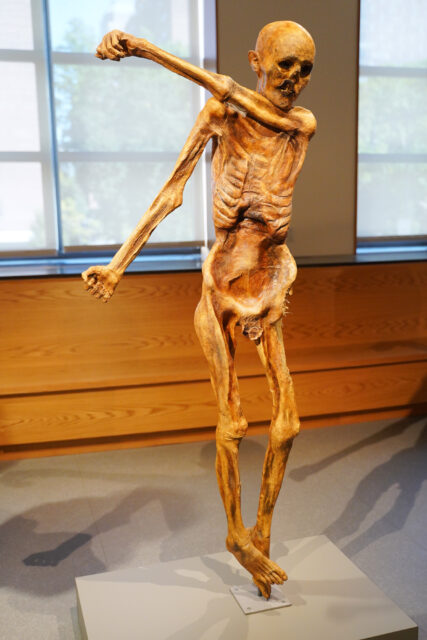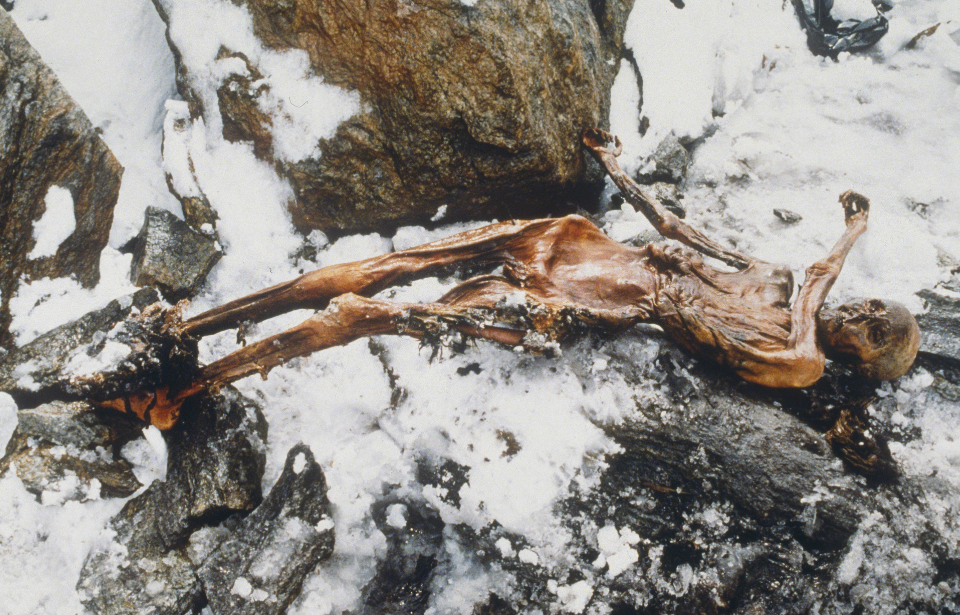Discovery of Ötzi the Iceman
On September 19, 1991, a remarkable discovery was made high in the Ötztal Alps, near the border of Austria and Italy. German tourists Helmut and Erika Simon stumbled upon the frozen, mummified remains of a man later named Ötzi the Iceman. Initially, the couple thought they had found a recent hiker who had met a tragic end in the mountains. However, when experts examined the body, they were astonished to learn that it was over 5,000 years old, dating back to around 3,300 BC. This made Ötzi the oldest natural human mummy ever found in Europe, offering a rare and precious glimpse into prehistoric life.

Ötzi’s body was exceptionally well-preserved, thanks to the icy conditions that had encased him for millennia. Scientists who studied him discovered that he died from an arrow wound to his shoulder, along with possible head trauma, suggesting a violent end. Further examination revealed fascinating details about his life and health. Ötzi suffered from arthritis, had hardened arteries, and even carried the bacteria responsible for Lyme disease. His last meal included grains, meat, and herbs, and pollen found in his stomach suggested he died in spring or early summer.
Along with his body, a number of artifacts were found that painted a vivid picture of his world. Ötzi was equipped with a copper axe, a flint knife, a quiver with arrows, and other tools, indicating he was skilled in survival techniques of his time. His clothing was made from animal hides and grasses, showcasing the textile abilities of his people. These findings provided invaluable insights into the daily life, technology, and skills of people living during the Copper Age.
The discovery of Ötzi the Iceman has had a profound impact on our understanding of prehistoric Europe. He has been the subject of countless studies, which continue to reveal new information about ancient health, diet, and human migration. Today, Ötzi is housed at the South Tyrol Museum of Archaeology in Bolzano, Italy, where he draws visitors from around the world eager to connect with a piece of ancient history.
More from us: CGI Helps Unwrap The Faces Of 5 Famous Mummies
Would you like to see more daily historical content from The Vintage News? What if we sent it directly to your inbox every day? Sign up here to receive our daily Today in History posts.
Ötzi’s discovery is not just a scientific treasure; it’s a powerful reminder of our shared human past. As one of the most important archaeological finds of the late 20th century, Ötzi the Iceman continues to captivate and educate, linking us to a distant time and offering a direct link to the lives of our ancestors.
